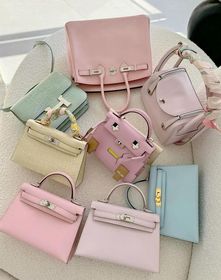When Hermès was hit with a class-action lawsuit last month for “antitrust” activities, it didn’t see it coming. Most of the luxury world has all eyes on this suit, filed by two interested consumers who claim they were denied a purchase, and whether it would go to trial. Many brands are gleeful. For long, brands have wondered how Hermès, a luxury leader, has managed to hold on to its strategy of rarity and snob value at the risk of losing a sale. Some industry watchers are worried, as American judges are famously pro-consumer.
In March, the plaintiffs Tina Cavalleri and Mark Glinoga filed a suit in San Francisco, California, stating Hermès was indulging in the “unlawful practice of tying”.
This means it made its customers purchase smaller products such as shoes, scarves, ties and costume jewellery before being allowed to purchase one of their two mega products, the Birkin bag or the Kelly purse. Both the Birkin and Kelly have been the subject of various books, blogs and films, thanks to the almost mythical marketing Hermès employs to promote them. The waitlist for a Birkin and Kelly can go into several months or years, giving rise to a famous saying, “You don’t choose an Hermès bag, it chooses you.”
The suit states the company is engaged in unfair, anti-competitive business practices, and the two complainants have also invited other consumers who have been denied a purchase to join their cause: their freedom to buy a crazy expensive handbag if they wanted to.
Hermès, last week, hired a well-known antitrust legal firm, Latham & Watkins, to represent them. They are yet to comment on the suit, adding to the intrigue. But last year, the brand told Businessoffashion.com, “Hermès strictly prohibits any sales of certain products as a condition to the purchase of others.” The CEO Axel Dumas, however, accepted that stores are encouraged to vet buyers and sell the sold-out bags only to real clients, in a bid to thwart the growing resale market for their products.
It is also interesting to note that this suit comes less than one year after Hermès’ stock rose to more than €2,000 per share, raising its market cap to €210 billion. Hermès, not the world’s largest-selling label (it appears well after Nike, Louis Vuitton, Chanel and Adidas), has for the first time surpassed Nike’s market cap.
I am honestly intrigued. If the suit goes to trial, Hermès will be forced to disclose trade practices it has long held secret. Hermès is said to focus on traditional manufacturing techniques and training its artisans for up to 10 years, across its 21 ateliers in France, instead of making assembly-line products.
But Michael Tonello (who authored the riotous Bringing Home the Birkin, exposing the luxury label’s faux waitlist by shopping for Birkins at the smaller stores instead), wrote on his Instagram: “I began reading some of the Hermès PurseForum (one-stop shop for inaccuracies and untruths) and Reddit groups, back around 2005. Each of them were like a country club for Hermès cheerleaders… “Every Hermès bag is entirely handmade, hand-sewn (‘saddle-stitched’) by a single craftsman at a bench.” And, I’ve yet to find anywhere in print where Hermès makes that claim. And they won’t, because it’s not true… But you can find that verbiage in most publications and stories about Hermès.”
Hermès, and eventually luxury brands after the trial, will be forced to disclose methods they disguise for the convenience of myth-based marketing. This may turn on their head stories of the exclusivity, quality and long-held beliefs of discretion that luxury labels are known for.
It will also shift the focus of power in the industry. Who controls the keys to the success of a luxury brand—the producer company, the purchasing customer, or the sales staff who decides whom to open the doors of the private viewing room to.
This suit may change the luxury game forever.


